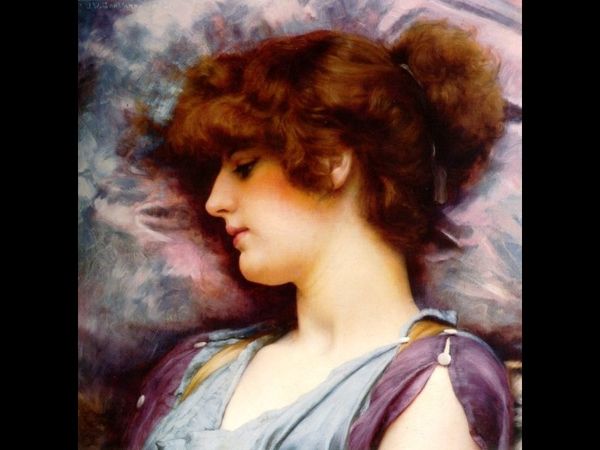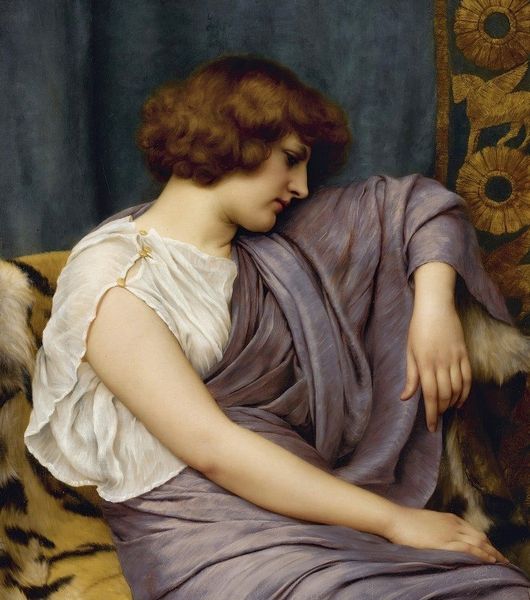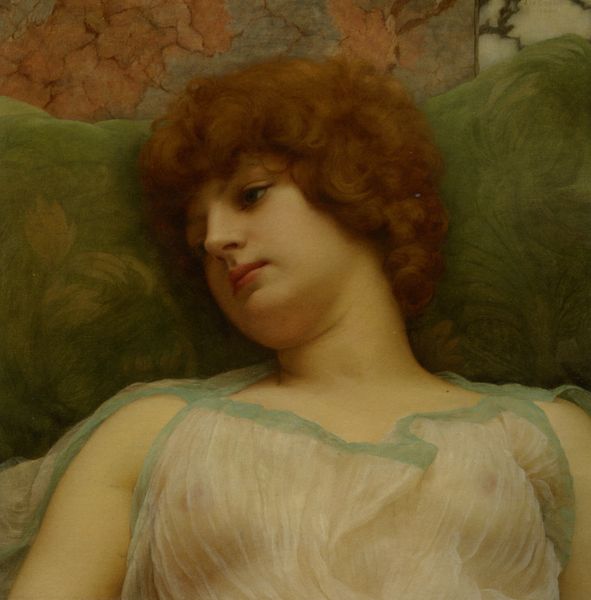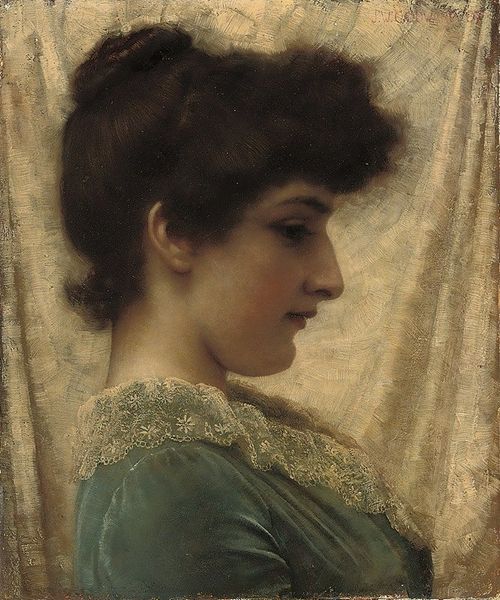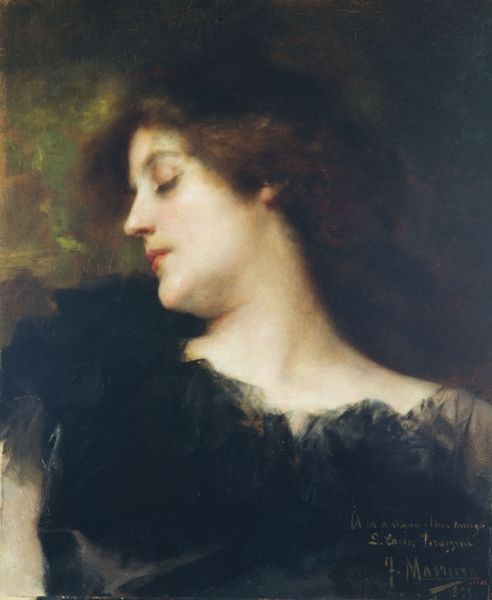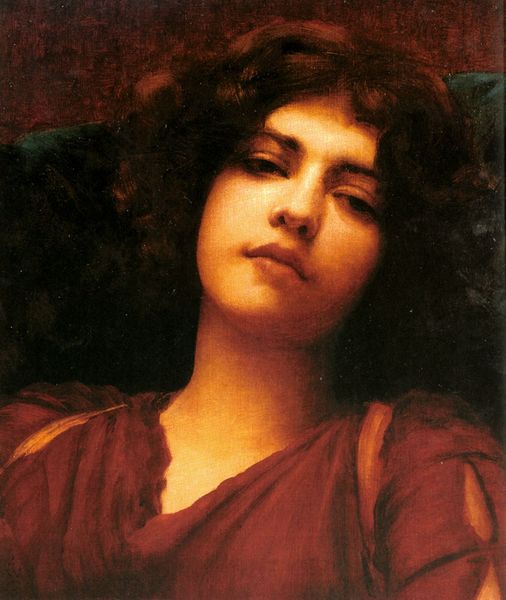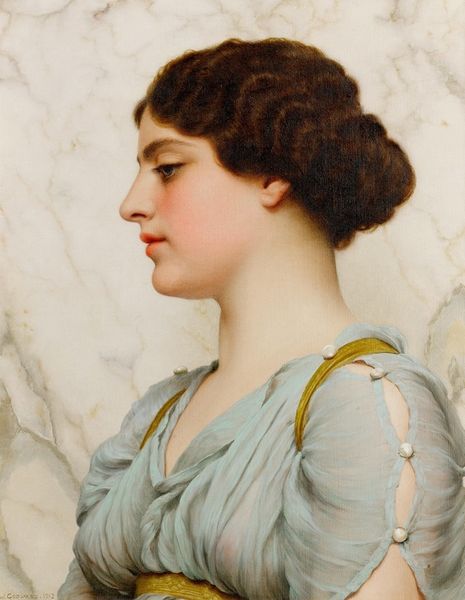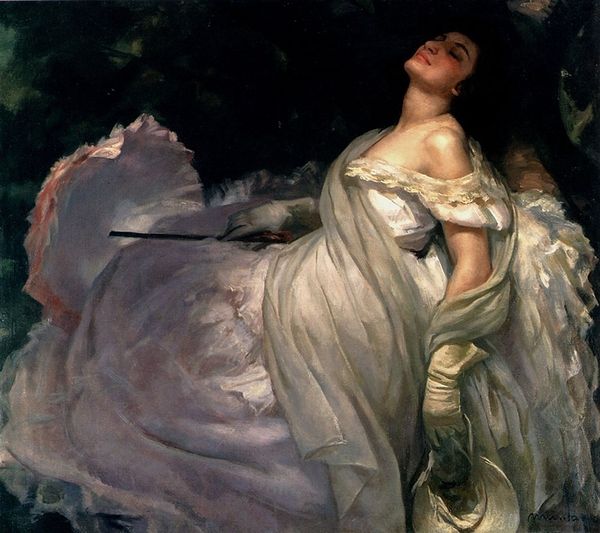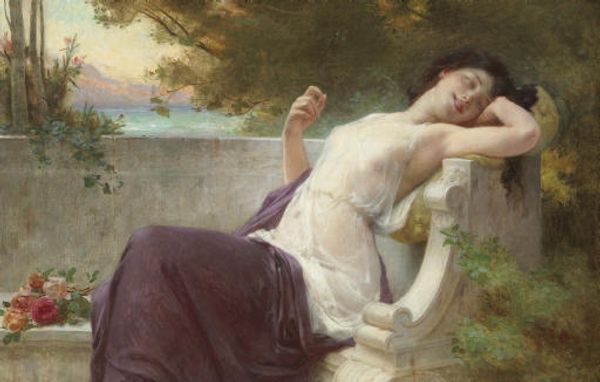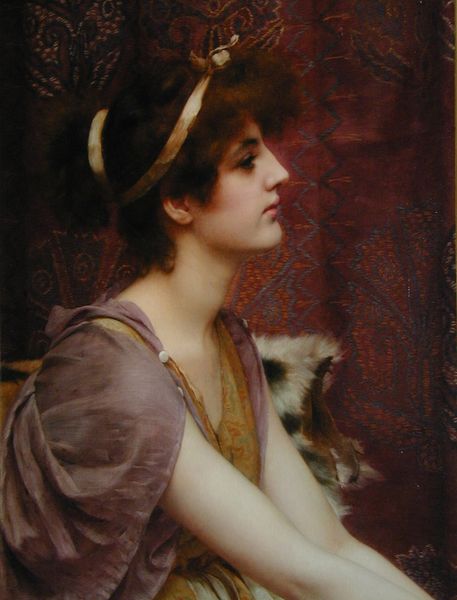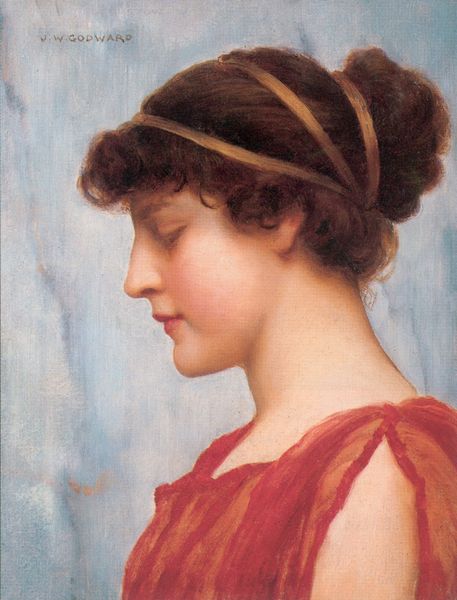
Copyright: Public Domain: Artvee
Editor: Here we have John William Godward's oil painting, "Far Away Thoughts," created in 1892. The way the subject is reclining creates a rather dreamy atmosphere. What captures your attention most when you view this piece? Curator: Well, immediately, I think about the rise of the bourgeois class and their evolving tastes at the turn of the century. The aesthetic of the piece, its romantic idealization of female beauty and historical fantasy, catered directly to the market demands of the era. Editor: Market demands? I hadn’t considered that aspect. Curator: Absolutely. Godward and his contemporaries, despite often claiming artistic freedom, were very much responding to specific consumer expectations. How does this portrait, in your opinion, relate to other portraits of the time? Editor: I see a contrast with some of the more confrontational or psychological portraits of the late 19th century. This seems more interested in surface beauty. Curator: Precisely. And that focus is telling. Think about the exhibitions of the time – the Royal Academy, for instance. This style flourished in institutions keen on upholding traditional notions of beauty and skill, effectively sidelining more radical or challenging artistic statements. The political ramifications of taste become quite apparent when considering these aspects. Editor: So the painting's popularity also speaks to the values promoted by those influential institutions? Curator: Indeed. By glorifying a romanticized vision of the past, these paintings indirectly endorsed certain social hierarchies and power structures that existed. Do you find any resonance with that analysis? Editor: That connection between art, social power, and institutional influence really clarifies the context behind the art. It is much more than aesthetic preference! Curator: Exactly! It showcases how artworks actively participate in cultural discourse and the formation of ideology, and how galleries shape it.
Comments
No comments
Be the first to comment and join the conversation on the ultimate creative platform.
